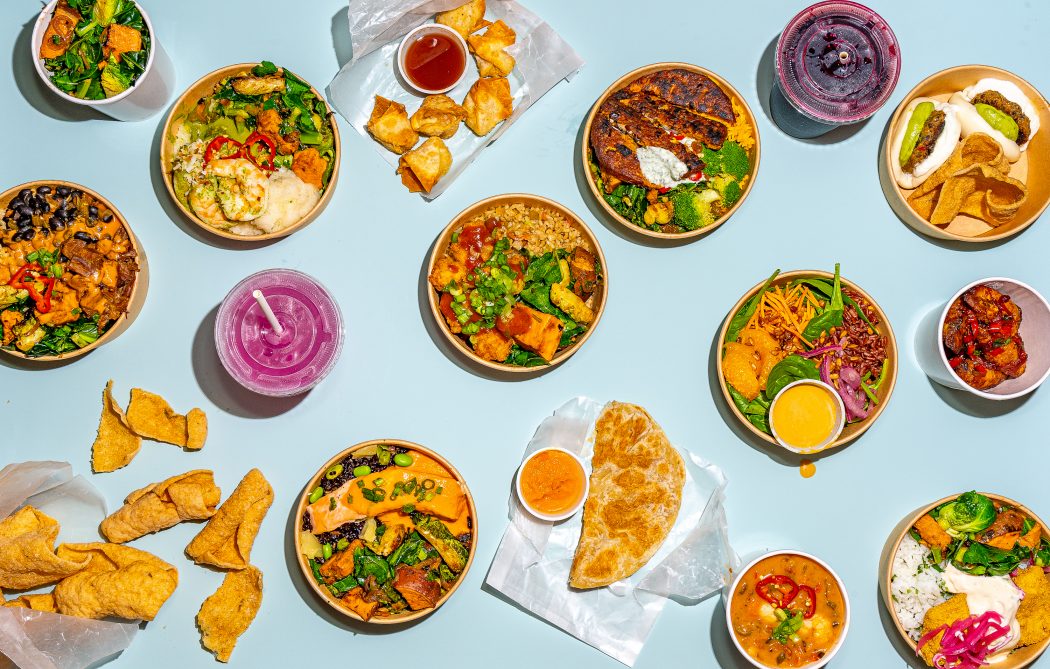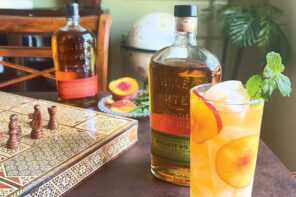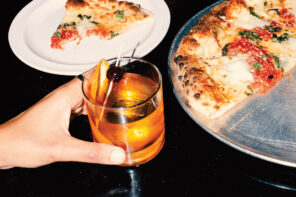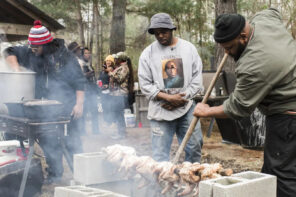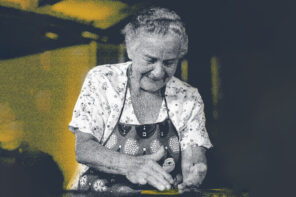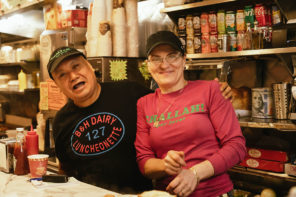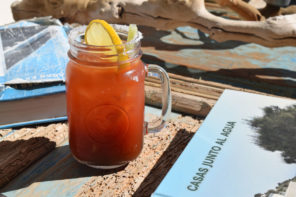Setting the Table with JJ Johnson
To say that Chef JJ Johnson is busy would be an understatement. Between owning and operating FIELDTRIP in Harlem, NY, publishing a cookbook, and kicking off season 3 of his show—Just Eats with JJ, we’d say he’s got a few things going on. But JJ is never too busy for his family, friends and making people feel cared for. Whalebone spoke to JJ on his efforts to take care of his Harlem community, especially this year, but really every day. FIELDTRIP supported first responders and the rest of the Harlem community in the early days of the lockdown, and then with the help of Caviar, made certain that good food was making its way to the people in the neighborhood. Setting the table with JJ would very likely feature some good food, but would definitely feature good people.
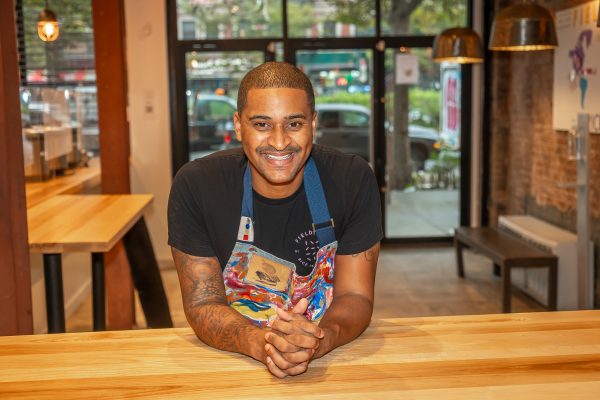
Chef JJ Johnson || All images by Noah Fecks for FIELDTRIP
You’re ordering takeout from your favorite place—what is something you need to make it feel special?
JJ Johnson: It’s weird but what makes it special is that my wife and I both look at food through two different lenses and we always come back to a part where it’s like, “So, What do you want today?” And at the end of the conversation it always gets back to me and she says “You’re the one who loves food more than anybody, you should know what you want!”
Those moments for me are about the deliberating, the confusion, figuring out the taste profile of the moment. Just that feeling of what we’re craving at the moment. And what makes delivery so special is you can really get busy people together, we get to spend time with each other. That moment when we pop open the delivery container, sit on our couch or at our table, and just recharge for 30 to 40 minutes. Maybe pour glasses of Marcel rosé, since we kind of love that rosé—just to indulge.
Tell us about the location of FIELDTRIP in Harlem—why is that spot so important?
JJ: I think having a restaurant in Harlem is important. Those corners that we live on in the city has one of the highest unemployment rates in New York City. Most people don’t talk about that.
The people that live there are in a two block radius that is surrounded by fried food, fast food, and bodegas—that’s the food culture around them because of their income level. And people believe that if you have that income level that that’s where you want to eat, right?
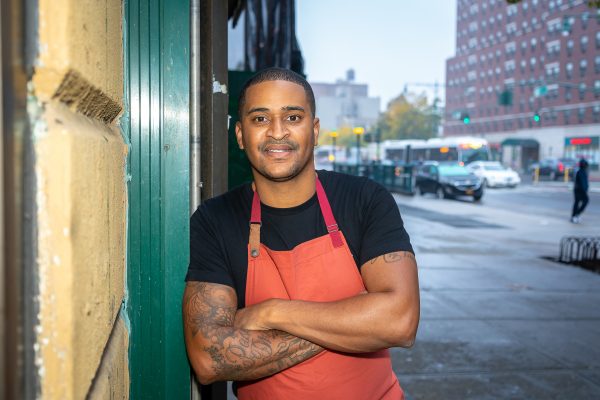
It’s really important for me to disrupt that market. And when I say disrupt that market, I mean the market for brown and black people who want to eat consciously better at an affordable rate—that is also delicious, wholesome and authentic.
And if it could work in Harlem, then it could really work anywhere in the world. But we can also show people that they can put a really good fast, casual place next to FIELDTRIP or across the street or in this community because people do want to eat this way. You kind of break that perception down. I didn’t know that that was gonna happen through a pandemic.
People need to eat better right now because of high health risk, because of food insecurity. And this is my community.
What does it mean to cook for someone? What part of yourself are you showing?
JJ: When I cook for you you’re getting me on the plate. Seeing the food I love to eat, the food I love to cook. It’s this connection that’s occurring and the best moments are shared around food.
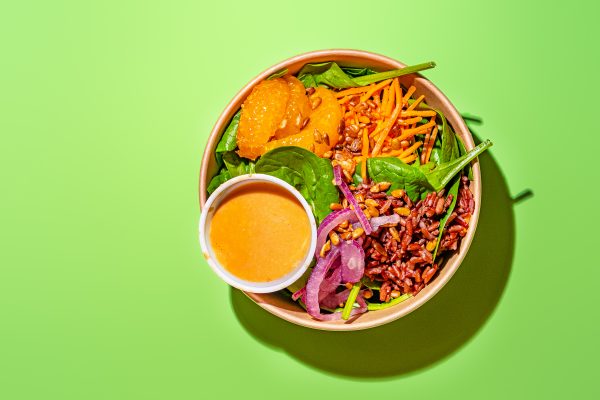
Maintaining a business this year is hard enough, but it seemed your goal was really to make sure your community and first responders were fed. What fuels you and your team to want to make that kind of positive impact on your community? How did you make that happen?
JJ: First, we focused on first responders. My wife’s a nurse so it’s very near and dear to my heart. She was in it. She kind of gave me the resources to say “Hey, we’re hungry, right? Not that we need food”—most of the nurses aren’t in dire need of food, they can go out and buy their own food, but it was like, “Hey, we don’t have time to think about food.” And that really resonated with me because there’s people that don’t have time to think about food because they don’t have the money to get food—and basically trying to trick themselves into not being hungry.
And that put it in motion. We started at my wife’s hospital and then we started feeding the community. My team and I would have wanted to feed all of New York, but it was important to focus on Harlem. Those are the people who eat at FIELDTRIP. Those are people that are getting hit with coronavirus so badly. It was just the right thing to do. Hopefully they’ll come out on the other side and feel like FIELDTRIP shone a little light onto the Harlem community in the heart of the pandemic.
More than feeding people, it was even in just serving food. You know more than half of America was out of work. The restaurant industry was closing, people were closing, every day. So for us we wanted to show a little hope, so people walk in and say, “Wow, I see Kira, I see Shay, I see Iris, I see Anna, I see Peter, I see Nancy, you know?” All these people coming into the door that live in this community seeing that their people still have a job. Someone might think “I’ve never eaten here before, I’m gonna go do that because they’re my neighbor, I gotta support them.”
FIELDTRIP showcases the nuance of rice, can you explain that?
JJ: Rice is the greatest ingredient. We all love it, we all know it. Don’t disrespect it! That’s why our slogan is “Rice is culture,” because everyone has a rice culture. Almost everywhere in the world has a rice culture. The first ingredient you ate as a kid was probably rice. Or you have that crazy memory of, like, overcooked or undercooked rice. Or beautifully cooked rice.
But rice just goes a little bit deeper than that, it all depends on where you are in the world. If you’re from Louisiana you know we have crawfish farmers. If you know crawfish farmers you know they grow rice because that’s how they survive.
Almost everywhere in the world has a rice culture.
Rice has integrity, and it’s really good for you. I have a love story with rice, and we don’t push it on to people that way. People come in, and people want white rice or brown rice and we’re like, “Hey, we have black rice, we have red rice, we have other types of rice. Do you wanna try it? It’s delicious!” You know, we’re not like, “Well, these are grandfather and granddaddy grains and they come from the farm!” We don’t do that. We’re just letting you know you can get the best product because—that’s what we stand for.
One word to describe Afro-Asian-American flavors?
JJ: Bold.
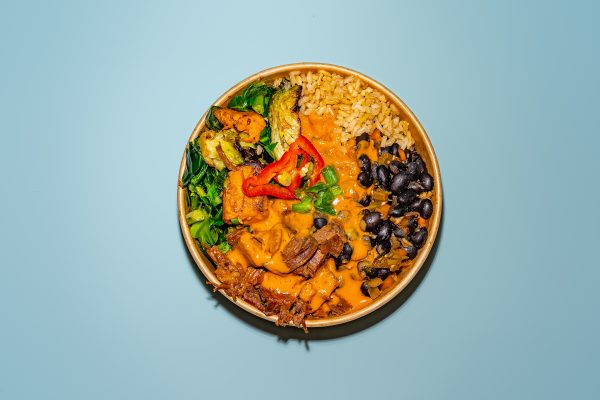
Where does Afro-Asian-American cuisine originate?
JJ: In the Caribbean, during the integration of the West African slaves with the Tenino Indians— the Tenino Indians taught the West African slaves how to make jerk. And the West Africans then used their spices to incorporate what they believe their jerk would be. And then when the West African slaves didn’t want to be slaves anymore, the Europeans got the Japanese, the Chinese, the Vietnamese and the Indians to be migrant workers. And then those people worked in those places and lived around those enslaved people, and then another phase of food was created.
So it’s a movement and celebration of the untold stories of the people that have lived lives that we couldn’t even imagine. It’s a celebration of the Jamaican and the Chinese, or the Bajans and the West Indies, or the Gullah Islands, or the African coast of Brazil, or Peru, or Costa Rica.
That’s what Afro-Asian-American is: The story of different people who have been living together in certain parts of the world. And I want to tell that story through food.
What’s a dish that gets a bad rap that deserves more credit?
JJ: I think that oxtails have up-and-down credibility. It all depends on who cooks it. If it’s cooked by one culture it’s considered amazing. If it’s cooked by another culture it’s considered cheap. I think oxtail is just one of those things that is delicious, you can move any flavor into, it has beautiful fat, and it just doesn’t get enough credit.
How are people of color marginalized in the culinary world? How can restaurant owners break that apart when doing their hiring?
JJ: I always go back to the trickle-down effect. Who is the classic superior of our restaurant industry, who do we admire, who do we write about? The French chef. And when we look into the classic French chef’s kitchen he used to have only white males. Not even white women. And that’s been the trickle effect for years.
For me it hurts me when I don’t see people of color as a sous chef or the manager. It sort of takes advantage of them because they know that they’re good for the job but never promote them. And they work really hard. But they never get to have a shot at that larger role. And that’s an issue.
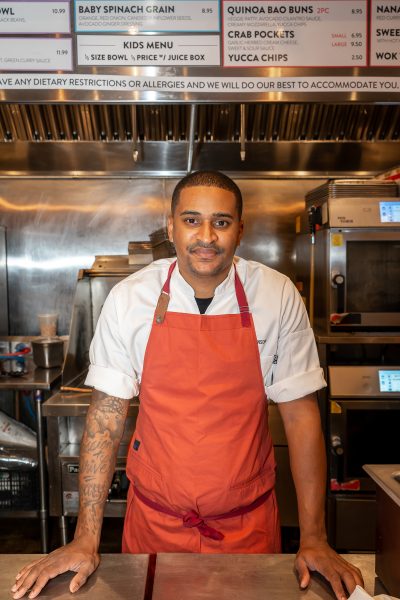
Will that change in the industry? I think COVID has hit a reset button on a lot of people. People are paying attention more than ever for authentic ways to manage and hire people. And I really hope that it changes, I really hope to see more diverse staff, I really hope to see people investing dollars in people that don’t look like them. I hope everybody takes it seriously but I would say that together we need to build the industry.
After a long, long day and someone else is cooking, what do you crave?
JJ: You know I would probably just invite my few friends over to my house, my Auntie Jean would be frying chicken because her fried chicken is spectacular. Would probably invite Justin Smillie over here to make some beautiful pasta. You know TJ would come over, he probably would barbecue something in the backyard. Now, I would literally have my dearest friends over to my house. I’d call my boy Kamal Grant and make sure he drops off some donuts for my Nana.
Just having the homies over to celebrate and spend time together ‘cause that’s what we take for granted and we always believe it’s going to be there because we work so hard. Sometimes we think that it’s just good to have the bling-bling the ching-ching—but these great moments with each other, we can look back and say, “Hey, remember that time we did this and we ate this?” And that’s what I’m looking forward to in the future.

